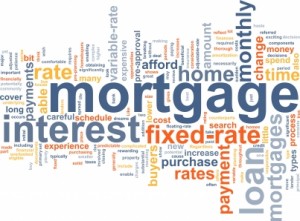February 12th, 2010
 In honor of Valentine’s Day, it’s time to think about love – and money. In honor of Valentine’s Day, it’s time to think about love – and money.
Spending money can be a powerful attractor when seeking a mate, but money is also the leading cause of divorce in the U.S., so it’s good to think twice before being swept off your feet by financial displays of affection.
The suitor who always arrives with flowers and whisks you off to exclusive clubs may be sinking deep into debt to do so. And the girl who always wears an expensive new dress for your dates may be doing the same.
The fact is, financial compatibility is one of the most important factors in selecting a life partner. If you save and he spends, or if you want to indulge yourself and he says “No way,” the honeymoon will end quickly.
So, if you’re beginning to think that your current flame may be “the one” it’s time to get serious – and talk about money, even if it’s difficult. As open as Americans are about every other detail of their lives, this seems to be the one subject that people don’t want to discuss.
But discussing it now can mean the difference between a long-lasting relationship and one that blows up as soon as the monthly bills roll in. So before you commit to a life together, sit your sweetheart down and have “the talk.”
Find out how he feels about saving – for your future children’s educations, for your retirement, even for vacations. Talk about budgeting and learn how she feels about doing without something today in order to have something else tomorrow – rather than having it all right now via credit cards.
Find out if your future partner is in debt right now, and if so, to what extent. Does he carry balances on a handful of credit cards? If so, is he getting them paid down, or are the balances growing? Has she paid off her school loans?
Ask your sweetheart to show you his or her credit scores – even though that is a closely guarded secret for many people.
If those credit scores are poor, you might want to put off the wedding while your future partner works to raise them. You may not have a desire to use credit right now, but at some point in the future you’ll probably want to own your own home – and if your fortunes are tied to someone with low credit scores, you may not qualify. And if you do, you’ll pay a much higher interest rate on your home mortgage loan.
Learn your own credit scores right now – order your free credit report today and see where you stand. You never know, your Valentine might ask to see your scores.
Author: Mike Clover
CreditScoreQuick.com your resource for free credit reports, credit cards, loans, and ground breaking credit news.
Posted in Uncategorized | Comments Off
February 11th, 2010
 If you’ve ever thought about the reasons why the U.S. is in the middle of a mortgage crisis right now, you’ve probably come up with a variety of reasons. If you’ve ever thought about the reasons why the U.S. is in the middle of a mortgage crisis right now, you’ve probably come up with a variety of reasons.
Some insist that it was the lax loan guidelines, some say sub-prime loans, others say adjustable rate mortgages, while others blame predatory lenders.
But one underlying reason is that many people took on loan payments that they simply could not afford. Granted, some became unable to pay because the domino effect of the mortgage crisis either rendered them unemployed or they had their wages cut.
But others couldn’t afford both the payments and their preferred lifestyle from the very first.
Why, then, did they get the loans? Because their mortgage lender told them they could afford it, and they didn’t stop to think about the sacrifices they might have to make in order to meet that monthly payment.
If you stop to think about it, a mortgage lender can’t possibly know what you really can afford. He or she can tell you what you cannot afford, if your debt to income ratios don’t fit the guidelines. But since you only tell the lender about obligations that will show up on your credit report, there could be a lot of expense in your life that the lender knows nothing about.
So listen to what the mortgage lender tells you, then take those figures and add in the expenses for things that bring joy to your life. Look at your budget yourself and decide if you really want to spend 28% of your pre-tax income on a home.
If it means you have to give up going out to dinner and a movie on Friday night, or drop the season pass to the ski hill or the golf course, is that OK with you? If it means you’ll have to keep driving your old car for a few more years, will you be happy?
You should aim for a mortgage payment that you can pay comfortably – not one that means you’ll give up everything else you enjoy in life, and not one that means you’ll be unable to put any money into a savings account.
If you use your own common sense and buy only what you can afford with the income you make today, you’ll be in no danger of losing your home to this crisis. And…you’ll be extremely happy a few years from now when your income has gone up.
Once you’ve decided on your maximum payment, your mortgage lender can help you determine the top dollar you should pay for a home after considering the principal, interest, taxes, insurance, and mortgage insurance.
Author: Mike Clover
CreditScoreQuick.com your resource for free credit reports, credit cards, loans, and ground breaking credit news.
Posted in Uncategorized | 1 Comment »
February 11th, 2010
 Before the proliferation of sub-prime lending, creative financing, zero down loans, and high-risk ARM’s, consumers with small down payments could look to FHA for a home mortgage loan. Before the proliferation of sub-prime lending, creative financing, zero down loans, and high-risk ARM’s, consumers with small down payments could look to FHA for a home mortgage loan.
Back then it was understood that the borrower needed to have 5% of the purchase price for a down payment – as opposed to 20% for a Conventional loan. Sellers were allowed to pay a good share of the closing costs, and the homes had to meet certain standards.
The idea was that a borrower with a small down payment probably wouldn’t have extra cash on hand to make repairs, so unless they were getting a rehab loan, the house had to be in good condition.
Now that sub-prime and other creative lending programs have disappeared, banks are requiring down payments much like they did before it all started – and FHA loans are once again becoming the mortgage of choice for consumers without large bank accounts.
However, the programs in place today are destined for alteration.
Borrowers with less than 20% down must pay an upfront mortgage insurance premium of 1.75% of the loan value, in addition to a monthly premium of ½ of 1%. Mortgage insurance is required on all loans – FHA or Conventional – when the borrower has invested less than 20% of the purchase price as a down payment. It drops off after a number of years and when the loan balance reaches 79.9% of appraised value.
At present, sellers are allowed to pay up to 6% of the purchase price in buyer’s closing costs.
According to a January 20, 2010 press release, on April 5 the upfront mortgage insurance premium will increase from 1.75% to 2.25%. Also, by mid-summer seller concessions will be reduced from 6% to 3%.
Under the new rules, borrowers with credit scores of 580 and above will be able to get a home mortgage with 3.5% down – provided, of course, that their debt to income ratios are in keeping with the guidelines. Those with scores under 580 will be required to make a 10% down payment.
According to the January 20 Press Release from HUD <http://portal.hud.gov/portal/page/portal/HUD/press/press_releases_media_advisories/2010/HUDNo.10-016>, other changes are in the planning stages or will soon be implemented.
One thing is clear – we don’t know what changes will be coming next, or how soon the reduction in allowable seller concessions will occur. That means that consumers who are considering buying with a FHA loan this year should probably do so before April. At the very least, they’ll save one-half of one percent in up-front mortgage insurance premiums. On a $100,000 loan, that’s $500.
Author: Mike Clover
CreditScoreQuick.com your resource for free credit reports, credit cards, loans, and ground breaking credit news.
Posted in Uncategorized | 1 Comment »
February 7th, 2010
Q:
I’m attempting to remove the multiple errors on my credit reports
Since I resided in the Philippines I was unable to complete each firm’s on line form.
I thus wrote each company explaining, I’m unemployed actively seeking employment, and was recently turned down for a new car loan with big Island Honda I included the letter from Honda dealer.
All 3 firms returned a form to complete basic name address for past 2 years ss #, etc. + a plethora of other information which I’ve included twice now.
Copy of current electric bill
Copy of current passport
copy of current drivers license
Copy of SS card
Copy of 1099 for 2009 to confirm my SS#
I complied precisely to their requests, yet in Saturdays mail comes the same form back asking for all the above information.
Are they complete idiots? Or do they simply not wish to send a current copy of my report for free?
Do I need to mail things Signed receipt requested?
I suspect there has been some identity theft. I only want to clean up delete incorrect information on my 3 reports.
OMG if you cannot even qualify for a Honda civic there is a REAL PROBLEM.
I’m not stupid but obviously unclear why they don’t get it? Help please. I’d like to buy a car and get back to work.
Regards, Bill
A:
Hi Bill…. Disputing your credit report can be a challenge sometimes. I am assuming from your question to us , that you have been contacting the companies that say you owe then money. I would recommend disputing directly with the credit bureaus. If you don’t owe this debt then it will be removed. You can dispute on-line through our on-line link. It is here. Depending on your circumstances we have wrote many articles on how to fix issues on your credit report. I will give you several good links about that. I will also include a link on how to resolve identity theft as well.
Here they are.
1.Fix Credit Report Errors
2. Quick Free Credit Repair Guide
3. Identity Theft
I am sure these articles will resolve your issues, it has for millions of other people.
Mike Clover:
CreditScoreQuick.com….. Your FREE resource for credit repair.

Posted in Uncategorized | Comments Off
February 7th, 2010
Will the terms of the Credit Card Act affect you? Of course they will. And some of the much-advertised terms aren’t quite what they seem. So be careful.
For instance, the new law requires 45 days’ advance notification of “significant changes” in the terms of your account. But apparently the lawmakers didn’t believe that decreases in your credit limit were “significant changes.”
So keep an eye on your statements – reading both the interest rate and the credit limit. And if you’re about to go shopping for a major purchase, check your account on line before using that card.
You can’t be hit with an overlimit fee unless you’ve opted in to allow overlimit transactions, but that means you could be red-faced when a retailer runs your card and says “sorry.”
Remember that getting near a “maxed out” status will have a negative effect on your credit score. So think carefully about using the card for a large purchase if it’s going to put you close to your limit.
Your interest rate on future purchases can be raised upon 45 days advance notice, and in most cases cannot be raised on existing balances. However…Your interest rate can raised on both existing balances and future purchases without notice if you’re 60 days late on a payment, if you’ve been using the card under a promotional rate, or if your card is at a variable rate tied to the Prime Rate.
Required advance notices must include an opt-out clause. Consider whether it makes sense to opt out if you dislike the proposed change. Opting out will close the account but ensures a “beneficial” repayment plan.
One huge benefit for consumers under the new plan is that your bill will be due on the same day each month, and the credit card issuer will be required to mail your statement 21 days ahead of the due date.
Now you won’t be late with a payment because the bill didn’t arrive until a day before a new due date. You’ll know when it’s due and can go on line to make the payment even if a statement is lost in the mail.
Credit card issuers are also no longer allowed to charge a fee for taking your payment over the phone or on the Internet. But… of course there’s a “but.” They can charge a fee to expedite payment through a service representative. So don’t wait until the due date to call. It could cost you anywhere from $15 to $39 to get that payment posted on time.
In fine print that I personally find dishonest, credit card issuers can require that your payment be received a day or even a couple of days ahead of the due date, in order to give them time to process the payment by the due date. So read the fine print. Your due date might not really be your due date.
Author: Mike Clover
CreditScoreQuick.com your resource for free credit reports, credit cards, loans, and ground breaking credit news.
Posted in Uncategorized | Comments Off
February 6th, 2010
 Does a higher interest rate on a loan or credit card really make that much a difference? Let’s break down the money difference in interest rate percentages and how much you are really paying for what you finance. Does a higher interest rate on a loan or credit card really make that much a difference? Let’s break down the money difference in interest rate percentages and how much you are really paying for what you finance.
In 2006, my friend bought her boyfriend a brand new “crotch rocket” motorcycle for Valentine’s day. That’s a pretty nice gift! They walked (or drove, actually) off the lot after she financed it for $8,300. However, she was young and didn’t realize what her interest rate was on the bike. It was a whopping %23. When you are financing thousands of dollars… 23% adds A LOT to the total amount. So they bought the bike and everything was great until the first payment was due. After realizing the actual monthly payment over the life of the loan, she wasn’t nearly excited over the bike anymore as she was when they drove off of the lot. After everything was said and done; after paying off the loan and spending way more than the sticker price on the bike originally… she ended uppaying $13,000 and change. When it is that big of a difference, the exact dollar amount doesn’t even matter any more. Bottom line, she got ripped. That’s almost TWICE the amount that she originally thought she was going to be paying for it. “Ridiculous” is the only word to describe that situation.
People need to be more cautious of the interest rates on their loans and credit cards. Even a single point on a loan could add up to thousands of dollars. I have done a little research for all of you reading this, so check this out: If you get a $200,000 mortgage at a 5% interest rate (which is very good), over the course of 30 years, you will pay $1,073.64 per month. Now, let’s raise that to a $200,000 mortgage at 6%. Guess what that payment just went up to? You are now paying $1,199.10! I’m no mathematician by any means, but I have a calculator sitting right in front of me, so let’s do the math real quick. That is $125.46 extra per month for 30 years. Trust me, it builds up to a whole lot of money.
It’s painful to see the realization of these numbers, but you need to get the best interest rate you can every time you get a loan or apply for a credit card. Otherwise, you are simply wasting money. I don’t know about you, but I wouldn’t mind an extra $125.46 a month. Be cautious of what your rates are so you can be responsible with your money.
Author: Mike Clover
CreditScoreQuick.com your resource for free credit reports, credit cards, loans, and ground breaking credit news.
Posted in Uncategorized | Comments Off
February 4th, 2010
When the Credit Card Act was signed into law last year, credit card issuers got busy figuring out ways to replace the income they were going to lose when the act went into effect.
One way was to begin raising rates across the board immediately. So some consumers with excellent credit who had always paid on time and had enjoyed low rates for years were suddenly faced with huge jumps in interest rates.
For those with poor or marginal credit, the rates went even higher. Now it isn’t unusual to see interest rates exceeding 30%.
Of course, the smartest thing for these consumers to do is to get those cards paid off as quickly as possible – and to stop charging.
Other card issuers, expecting that the prime rate cannot stay low forever, changed to variable rates tied to prime. They won’t get hurt when their cost of funds goes up because they’ll be able to pass the cost on to their customers.
Still others have instituted annual fees.
The price of these fees can vary greatly, so if you get the required 45 day notice that your card is going to impose an annual fee, do your math.
Rewards cards are the ones most likely to charge a fee, and depending upon the rewards, the fee could be hefty. So figure out what you stand to gain from the rewards and weigh it against the annual cost. You may find that you’ll be better off using a different card.
Some cards, known as “Fee harvester cards,” charge other fees as well. Some charge an application fee, while some charge a monthly fee or a transaction fee. Some even charge an “inactivity fee.” And some are offered with interest rates that look like they must have been typographical errors. I saw one card offer with a 60% Annual percentage rate.
The Credit Card Act has put a limit on these cards. Where they once could charge up-front fees of $160 or more to obtain a card with a credit limit of $200, they are now limited to charging only 25% of your credit limit in fees during the first year.
The bottom line is this: Credit card issuers aren’t there to help consumers. They’re there to make money. So read everything before you apply for a new card, and keep a close eye on all statements and correspondence regarding your existing cards.
Author: Mike Clover
CreditScoreQuick.com your resource for free credit reports, credit cards, loans, and ground breaking credit news.
Posted in Uncategorized | Comments Off
January 29th, 2010
 The mortgage industry as a whole is experiencing big changes in credit requirements. The requirements keep getting tougher as more and more foreclosures hit the books. The strict requirements are all with good reason. Here are some of the new updates with loans. The mortgage industry as a whole is experiencing big changes in credit requirements. The requirements keep getting tougher as more and more foreclosures hit the books. The strict requirements are all with good reason. Here are some of the new updates with loans.
FHA changes
FHA just announced that they will only allow the seller to pay 3% of your closing costs. In the past the seller could pay 6% of your closing costs. So essentially you will need your 3.5% down payment along with another 3% in closings costs to get into a home. This change will affect many Americans trying to buy. In a nut shell you will need 6.5% of the sales price to secure financing.
Also FHA increased the Mortgage Insurance Premium (M.I.P.) to 2.25% of the loan amount. It was 1.75% which was increased from 1.25% in 2008. These changes are due to the high number of foreclosure across the U.S. FHA is the only part of the government that is not funded by tax payer dollars. So they have to keep a certain amount of money from (M.I.P.) stock piled for insurance claims from banks due to foreclosures. This stock pile has been on a steady decline due to high number of foreclosures, and is in need of help. This is why we have the M.I.P. change.
FHA will allow you to get a loan down to a 580 credit score with 3.5% down, but most banks require a 620 or higher credit score. So even though the guidelines might be a certain way with F.H.A., the requirements will differ with banks. Folks this is the reality of the matter currently. So let’s recap on requirements for F.H.A.
1. 3.5% down
2. 3% closing cost monies needed
3. Most banks require a 620 or higher credit score
4. Higher M.I.P. (2.25%) of loan amount.
Conventional Loans
Conventional loans are the most difficult to get. You will need a minimum of a 720 credit score to get a good rate and terms. Some banks will go lower, but scores below a 720 are tough to get done. Conventional loans require 5% down payment and the seller can only pay 3% of your closing costs. So this type of loan is for borrowers with excellent credit and money to work with.
If you are in the market to get a mortgage, I would recommend getting your credit report. You can get your free credit report with no credit scores at www.annualcreditreport.com or your credit report with scores at www.creditscorequick.com.
Author: Mike Clover
CreditScoreQuick.com your resource for free credit reports, credit cards, loans, and ground breaking credit news.
Posted in Uncategorized | Comments Off
January 16th, 2010
 2010 marks the culmination of a 17 year effort to help consumers save money on mortgage loan closing costs by allowing them to compare apples to apples. 2010 marks the culmination of a 17 year effort to help consumers save money on mortgage loan closing costs by allowing them to compare apples to apples.
Until now, lenders were encouraged to provide a good faith estimate, but not all did, and even when they did the fees and costs were not always clear. Each lender had its own form and method of dividing up costs, so a consumer could have a tough time trying to compare fees between two lenders.
Now the form is standardized and each cost has its own designated spot. Lenders are required to provide consumers with the GFE within 3 days of making a loan application and are required to stand by that estimate for 10 days. This is in order to allow the consumer time to make comparisons.
Once a lender is chosen, that lender has to stick with the fees listed for its own services on the GFE. One drawback to this new RESPA rule is that lenders – no longer able to use bait and switch tactics – will be unwilling to pre-approve a borrower.
The new form contains clear definitions of loan terms and a place for comparison between different loan programs offered by the lender. Another page serves to help consumers compare fees between different lenders.
Lenders don’t guarantee exact prices for services provided by other vendors, such as title insurance and inspections. However, as long as the consumer chooses vendors from the lender’s approved list, those fees cannot be more than 10% higher than the estimate.
This rule means liability for the lender if a service provider’s fees turn out to be higher than anticipated. Thus, lenders will be keeping their approved lists short in hopes that consumers will go “off list.” If a consumer decides to shop around, the lender bears no responsibility for accuracy of the estimate.
Another intent of the new GFE form was to allow borrowers to compare the good faith estimate with the final HUD-1 statement. Unfortunately, that didn’t pan out. The comparison is possible, but time-consuming, as fees and costs are itemized on the HUD-1 while they are categorized on the GFE.
Lenders are supposed to present the borrower with the final closing statement one day prior to closing. Thus there is time to make the comparison ahead of closing. Just to be on the safe side, borrowers would be well advised to take the time to compare those statements before heading off to sign the papers.
Author: Mike Clover
CreditScoreQuick.com your resource for free credit reports, credit cards, loans, and ground breaking credit news.
Posted in Uncategorized | 2 Comments »
January 14th, 2010
 Credit card holders across the U.S. are rejoicing because the restrictions on card issuers will soon come into effect. Many of the provisions will provide consumers with much needed relief. Credit card holders across the U.S. are rejoicing because the restrictions on card issuers will soon come into effect. Many of the provisions will provide consumers with much needed relief.
But don’t count on these new regulations to prevent every unfavorable action by credit card issuers.
Even after the law becomes effective on February 22, you’ll still need to keep a careful watch on all correspondence from the bank, and you’ll still need to be vigilant in order to maintain your credit scores. So continue to read everything the bank sends, and check all the figures on your statement monthly.
Credit card issuers will retain the option to reduce your credit limit, close your account entirely, or add some new fee. And with regard to new fees, it’s safe to assume that most banks will add them in an effort to increase their profits, and some banks have already begun to do so.
For instance, some banks are charging a fee of $19 after 12 months of inactivity. Citi is tacking on fees of up to $90 on some accounts that don’t meet annual spending thresholds.
Since high credit limits that aren’t being used do positively impact your credit scores, you should take steps to keep all of your accounts open and their credit limits high. In fact, it is a good idea to ask for limit increases right now – before the new laws come into effect and make it tougher. Under the CARD Act, issuers will not increase credit limits unless they consider the consumer able to make required minimum payments using all of their available credit.
In order to keep all of your available credit lines open you should use every credit card you own, at least once every calendar quarter, because some banks are simply closing unused accounts.
Contrary to what you might think, you don’t need to carry a balance to keep your credit card issuers happy with you. While they would like to earn interest on your balance, they still make money from the vendors every time you use your card. This is a fee of 1 to 3 percent of the purchase price, depending upon their agreement with the vendor.
So use that card for a few routine purchases and then pay it off when the bill arrives. Even if you don’t plan a credit purchase in the near future, keeping your scores high is in your best interest.
Author: Marte Cliff
CreditScoreQuick.com your resource for free credit reports, credit cards, loans, and ground breaking credit news.
Posted in Uncategorized | Comments Off
Disclaimer: This information has been compiled and provided by CreditScoreQuick.com as an informational service to the public. While our goal is to provide information that will help consumers to manage their credit and debt, this information should not be considered legal advice. Such advice must be specific to the various circumstances of each person's situation, and the general information provided on these pages should not be used as a substitute for the advice of competent legal counsel.

|
 In honor of Valentine’s Day, it’s time to think about love – and money.
In honor of Valentine’s Day, it’s time to think about love – and money.


 If you’ve ever thought about the reasons why the U.S. is in the middle of a mortgage crisis right now, you’ve probably come up with a variety of reasons.
If you’ve ever thought about the reasons why the U.S. is in the middle of a mortgage crisis right now, you’ve probably come up with a variety of reasons. Before the proliferation of sub-prime lending, creative financing, zero down loans, and high-risk ARM’s, consumers with small down payments could look to FHA for a home mortgage loan.
Before the proliferation of sub-prime lending, creative financing, zero down loans, and high-risk ARM’s, consumers with small down payments could look to FHA for a home mortgage loan.
 Does a higher interest rate on a loan or credit card really make that much a difference? Let’s break down the money difference in interest rate percentages and how much you are really paying for what you finance.
Does a higher interest rate on a loan or credit card really make that much a difference? Let’s break down the money difference in interest rate percentages and how much you are really paying for what you finance. The mortgage industry as a whole is experiencing big changes in credit requirements. The requirements keep getting tougher as more and more foreclosures hit the books. The strict requirements are all with good reason. Here are some of the new updates with loans.
The mortgage industry as a whole is experiencing big changes in credit requirements. The requirements keep getting tougher as more and more foreclosures hit the books. The strict requirements are all with good reason. Here are some of the new updates with loans. 2010 marks the culmination of a 17 year effort to help consumers save money on mortgage loan closing costs by allowing them to compare apples to apples.
2010 marks the culmination of a 17 year effort to help consumers save money on mortgage loan closing costs by allowing them to compare apples to apples.
